Space Read online
SPACE
“THIS BOOK SHOULD GIVE MICHENER FANS
EXACTLY WHAT THEY EXPECT.”
NEW YORK DAILY NEWS
“A NOVEL OF VERY HIGH ADVENTURE ...
A sympathetic, historically sound treatment
of an important human endeavor that some day could be
the stuff of myth, told here with gripping effect ... vivid scenes.
Mr. Michener leaves us with the hope
that the dream of exploring space will not die.”
NEW YORK TIMES BOOK REVIEW
“Michener has laid bare, with a newspaper reporter’s
pitiless instinct for the truth, the central issue of
modern American society. Better than most writers,
he gives his readers an understanding of the men and women
involved in the mighty saga of space.
By using the space program as a cutting edge,
Michener has shown a cross section of America today-
all the bright promise of our glittering technology,
all the choices we face today in our
continual striving to build a better tomorrow”
WASHINGTON POST
“A MASTER STORYTELLER ...
Mr. Michener, by any standards, is a phenomenon.
SPACE is one of his best books.
Here, as many times before, he teaches us
and compels us to think largely about large things.”
WALL STREET JOURNAL
“Michener blends his fictional
space story with real people and events.
And the result is a fascinating look at space exploration.
There’s a lot of information here about space
and the U.S. space program as well as a
colorful cast of characters.”
ASSOCIATED PRESS
“AN EXPANSIVE PAGEANT OF THE
AMERICAN SPACE PROGRAM ...
Space skillfully blends fiction and non-fiction.
It evinces a love of the land and a reverence for nature.
It exudes a kind of upbeat humanism.
The book deserves the wide audience it will
almost certainly have. It tells a good story.
And better, it does not shy away from the
technical and the scientific.
Michener’s SPACE exalts the rigorous
application of mind as the natural accessory of dream.”
BOSTON GLOBE
“MICHENER HAS BECOME
AN INSTITUTION IN AMERICA,
ranking somewhere between Disneyland
and the Library of Congress. You learn a lot from him.”
CHICAGO TRIBUNE BOOK WORLD
“THE WORLD’S BEST
RESEARCHER OF NOVELS.
Space certainly has a remarkable theme.
The struggle between “immaculate science” and the
vulgarities of politics is very well portrayed.
And Mr. Michener is eloquent in depicting the actual
flights into space, as well as the blazing, apocalyptic
reentry of the shuttle into earth’s atmosphere:”
NEW YORK TIMES
“THE COSMIC APPROACH TO FICTION ...
SPACE is everything that Michener fans
have come to expect. Without question, the space program’s
dramatic dimensions provide the stuff of great fiction.”
BUSINESS WEEK
“A DIFFICULT BOOK TO PUT DOWN ...
And this subject is one which is hardly stale for,
as we all know; we are still on the threshold;
the real poetry of space travel has yet to begin!”
BALTIMORE EVENING SUN
“SWEEPING AND MIND-ENHANCING ...
Michener grapples with the ultimate mystery-
that of the universe, what lies beyond our galaxy
and the billion galaxies beyond that.
This is not only Michener’s most ambitious novel:
it is also his most challenging and his most compelling.
Salud!”
JOHN BAR.KHAM REVIEWS
Fawcett Crest Books
By James A. Michener:
THE BRIDGES AT TOKO-RI
CARAVANS
CENTENNIAL
CHESAPEAKE
THE COVENANT
THE DRIFTERS
THE FIRES OF SPRING
HAWAII
RETURN TO PARADISE
SAYONARA
THE SOURCE
TALES OF THE SOUTH PACIFIC
SPACE
James A.
Michener
FAWCETT CREST - NEW YORK
A Fawcett Crest Book
Published by Ballantine Books
Copyright © 1982 by James A. Michener
All rights reserved under International and Pan-American Copyright
Conventions. Published in the United States by Ballantine Books,
a division of Random House, Inc., New York, and simultaneously
in Canada by Random House of Canada Limited, Toronto.
Library of Congress Catalog Card Number: 82-40127
ISBN 0-449-20379-4
This edition published by arrangement with Random House, Inc.
Manufactured in the United States of America
First International Edition: August 1983
First U.S. Edition: November 1983
ACKNOWLEDGMENTS
ON 4 July 1976 I was invited by Dr. Donald P. Hearth of the National Aeronautics and Space Administration to participate in a round-table discussion of the meaning of America’s Viking landing on Mars, and with that heady introduction to the greatest minds of the space age I began my serious study.
In the spring of 1979 I was appointed to the NASA Advisory Council, which advises NASA, and there I met repeatedly with men who conducted our space effort, and visited several times the great NASA bases at which the work was done. I was allowed to participate in the full life of the agency. I did this uninterruptedly for four years.
Lacking specialized training in science, I was disadvantaged, but my long experience with mathematics and astronomy repaired some of the deficiency, and my work with various aspects of our program repaired other gaps. Most of all, I talked incessantly with experts, visited laboratories, and studied procedures.
My acquaintance with NASA engineers and scientists was extensive, and to them I owe a great debt, especially those at Langley, Wallops, Ames, Houston, Huntsville, Goddard and the Jet Propulsion Laboratory.
My acquaintance with astronauts was more spotty, for I [ii] met only those who bumped into me as I went about my other duties. Deke Slayton was most helpful. John Young was an inspiration. Donn Eisele, a neighbor, gave me many insights. Because the Shuttle dominated the horizon in the years of my incumbency, I knew its pilots: Robert Crippen, Joe Engle, Dick Truly. Ed Gibson was extremely helpful in my study of the Sun, about which he has written brilliantly. Joe Kerwin, a medical astronaut with weeks in orbit, was unusually helpful on four different occasions. I had brief but rewarding interviews with Mike Collins, a graceful writer about space, and the two elegant women astronauts Judith Resnick and Anna Fisher.
At headquarters I was accorded courtesies by Dr. Robert Frosch, the administrator, and by Dr. Alan Lovelace, his assistant. They made available the consultative services of General Harris Hull, Dr. John Naugle, NASA’s chief scientist, Nat Cohen, the executive secretary of our council, and Jane Scott, who supervised my movements. Before his untimely death in the Himalayas, Tim Mutch met with me many times to discuss scientific and managerial points.
Certain experts were recommended to me as unusually informed and helpful in their fields, and to these I am indebted:
Battle of Leyte Gulf: Admiral Fel
ix Stump, who commanded one of the baby flattop squadrons in that historic naval engagement, and Bill Lederer, his witty assistant.
Peenemünde: Dr. Ernst Stuhlinger and Karl Heimburg, both of whom made the hegira from Peenemünde to El Paso to Huntsville.
Patuxent River: Marshall Beebe, USN, who explained the area in 1952. Admiral John Wissler, who showed me around in 1981.
Operation of a Large NASA Base: The following were especially instructive during my extended stay at the Marshall Space Flight Center in Huntsville: Dr. William Lucas, James E. Kingsbury, Thomas Lee, Robert Lindstrom, John Potate, Harry Watters, Joe Jones.
Mission Control Operations: Dr. Chris Kraft, the distinguished expert who handled the major sequence of flights; [iii] Gene Krantz, in charge of present flights, who allowed me to sit in for an entire day to watch how it was done.
Astronomy: Dr. George Field, Dr. A. G. W. Cameron, both of Harvard; Dr. David L. Crawford, Kitt Peak; Dr. Jacques Beckers of the Multiple Mirror Telescope Observatory, Tucson; Dr. Anthony Jenzano, University of North Carolina.
Communications: Dean Cubley of Houston.
Lunar-Orbit Rendezvous: Dr. John C. Houbolt of Langley, who led the fight for this mode.
Supersonic Flight: John V. Becker of Langley, who pioneered this field.
Wind Tunnels: William P. Henderson of Langley, who twice demonstrated his 16-foot tunnel.
One-Sixth Gravity: Donald E. Hewes of Langley, who invented the device for creating an approximation of Moon gravity on Earth.
Interplanetary Navigation: Frank Hughes, Richard Parten, Duane Mosel, all of Houston. Frank Jordan of JPL. Dr. Philip Felleman of MIT was especially instructive.
Image Processing: Torrance Johnson of JPL.
Space Telescope: Dr. C. R. O’Dell, of the University of Chicago and Huntsville.
Earth Handling of Messages from Space: William Koselka and Chuck Koscieliski of the Goldstone Station in California; at the NASA stations in Australia, Lewis Wainright, Thomas Reid and Kevin Westbrook were helpful, and Bill Wood in Canberra provided living quarters.
Interplanetary Exploration: Charlie Hall and C. A. Syvertson, both of Ames, who were responsible for developing and supervising several pioneer missions to Jupiter and Saturn.
Life on Other Planets: Dr. Carl Sagan of Cornell, who has written brilliantly on this arcane subject.
I am particularly indebted to the following distinguished scholars and administrators who agreed to read portions of the manuscript to help me weed out error. They gave help [iv] beyond the call of duty or friendship. Such errors as remain are my fault.
Korea Air Battles and Patuxent River Test-Piloting: Captain Jerry O’Rourke, USN, who taught me dive-bombing in 1953 for my early novel The Bridges at Toko-Ri and who conducted a seminar for me in 1981 regarding Patuxent River and test pilots.
Wallops Island and Atmospheric Research: Abe Spinak, long an official on the island and a formidable research man.
Photo Imaging on the Mars and Saturn Expeditions: Dr. Bradford A. Smith, University of Arizona, who served as Imaging Team Leader during the Voyager missions to Jupiter and Saturn.
Solar Flares: Dr. Jack Eddy, High Altitude Observatory, one of our leading authorities on solar physics.
Circadian Rhythms: Dr. Richard J. Wurtman, Massachusetts Institute of Technology.
Technical Communications between Flight Control at Houston and the Astronauts of Gemini 13 and Apollo 18: Joe Kerwin, who served as CapCom during the fateful aborted flight of Apollo 13.
Medical Data Regarding Apollo 18: Joe Kerwin, astronaut and medical doctor.
Movement of Earth and Sun: Dr. A. G. W. Cameron, Harvard University, kindly read the brief but important section on multiple movements.
The Entire Manuscript: John Naugle, who lived at the heart of NASA operations for many years and who first suggested that I try to write this book. He taught me a great deal.
I shall always remember with affection and envy those brilliant men who served on the Advisory Council or who participated in our various seminars, and who gave me so much help in understanding the things they were talking about: Freeman Dyson of Princeton, Arthur Kantrowitz of Dartmouth College, John Firor of the National Center for Atmospheric Research, Daniel Fink of General Electric, George [v] Field and A. G. W. Cameron of Harvard, who helped especially in advanced astronomy, and the three aeronautical experts who proved instructive in this field which concerns me deeply: Robert Johnson of Douglas Aircraft, Holden Withington of Boeing, and everybody’s friend and counselor, Willis Hawkins of Lockheed. My special appreciation to William Nierenberg, Director of the Scripps Institute of Oceanography, who chaired our group. I never had an abler group of colleagues.
JAMES A. MICHENER
St. Michaels, Maryland
February 2, 1982
CONTENTS
I. FOUR MEN … 1
II. FOUR WOMEN … 110
III. KOREA … 176
IV. PAX RIVER … 261
V. INTELLECTUAL DECISIONS … 321
VI. TWINS … 406
VII. THE MOON … 521
VIII. REAL TIME … 542
IX. DARK SIDE OF THE MOON … 593
X. MARS … 651
XI. THE RINGS OF SATURN … 715
The Four Families … 807
The Solid Six Astronauts … 807
The Others … 808
DISCLAIMER
This is a novel and to construe it as anything else would be a mistake. The Mott, Grant, Pope and Kolff families are imaginary and are based upon no real prototypes. The Solid Six group of astronauts did not exist, nor was there any Gemini 13 or Apollo 18.
However, the great NASA bases, the Patuxent River experience, the battle operations in Korea and the general activities of the astronauts are realistically presented.
Certain historical personages do appear briefly, such as Lyndon B. Johnson, President Eisenhower, Secretary Wilson, the astronauts Deke Slayton and Mike Collins, and the scientists Jack Eddy, John Houbolt and Carl Sagan, but they are not given fictitious roles or inflated speeches.
The Battle of Leyte Gulf and the behavior of the admirals, American and Japanese, are faithfully reported. There was no destroyer escort Lucas Dean, but there were warships like it, and its exploits are not exaggerated. The major bombing of Peenemünde occurred as stated in August 1943 and was an exclusive British affair, but there were follow-up bombings the next year and I have expanded one of these. Generals Breutzl and Funkhauser are imaginary, but of course, Wernher Von Braun was real and even more powerful and impressive than I state.
SPACE
FOUR MEN
ON 24 October 1944 planet Earth was following its orbit about the sun as it has obediently done for nearly five billion years. It moved at the stunning speed of sixty-six thousand miles an hour, and in doing so, created the seasons. In the northern hemisphere it was a burnished autumn; in the southern, a burgeoning spring.
At the same time, the Earth revolved on its axis at a speed of more than a thousand miles an hour at the equator, turning from west to east, and this produced day and night.
As a new day broke over the Philippine Islands, two navy men, one Japanese, one American, were about to perform acts of such valor that they would be remembered whenever the historic battles of the sea were compared and evaluated.
Later, when the ceaseless turning of the Earth brought high noon to the island town of Peenemünde on Germany’s Baltic coast, a small, quiet mechanical genius working for Adolf Hitler would find himself in the middle of an ordinary day which would have a most extraordinary conclusion.
A few hours following, when midafternoon reached London, a Youthful American engineer, not in uniform, would see for himself the power of Hitler’s vengeance weapon, the A-4, and would take steps to destroy it but [2] not its makers, because even then the American government could foresee that when the war ended, they would need these German scientists.
And toward the close of that long day, when the Earth had
revolved the western region of America into the hours of sunset, in a small city in the state of Fremont a boy of seventeen would experience three resplendent moments, and would realize as they were happening that they were special in a way that might never be exceeded.
In the early afternoon of that October Tuesday, Stanley, Mott, an American civilian twenty-six years old, displayed a sense of almost frantic urgency as he watched the radar screen at a tracking station thirteen miles south of London.
“It’s coming!” an English sergeant cried, trying vainly to keep the excitement out of his voice. And there on the screen, as Mott watched, the sinister signal showed, a supersonic, unmanned monster bomb coming at London from some undetermined spot in Holland.
Even on the radar it displayed its silent speed, more than two thousand miles an hour. It would not be heard at this station until some moments after it had passed: Then sonic booms would thunder through the air, reassuring the listeners that this bomb at least had passed them by. “If you hear it,” the sergeant explained to Mott, “it’s already gone.”
In the fragile moments of final silence, everyone in the room listened intently for the tremendous sound which would indicate that the rocket bomb had struck, and sensitive devices were pointed toward London. K-k-k-krash! The bomb had fallen. The listeners turned antenna to new directions and soon an ashen-faced young man from Oxford University announced; “The heart of London. But I do believe east of Trafalgar Square.”

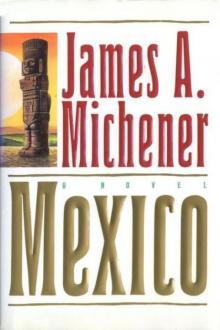 Mexico
Mexico The World Is My Home: A Memoir
The World Is My Home: A Memoir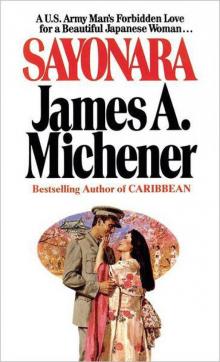 Sayonara
Sayonara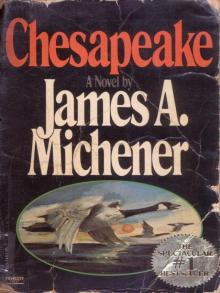 Chesapeake
Chesapeake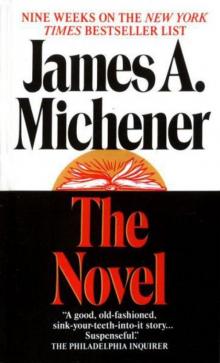 The Novel
The Novel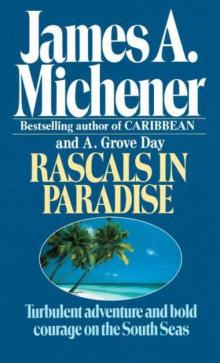 Rascals in Paradise
Rascals in Paradise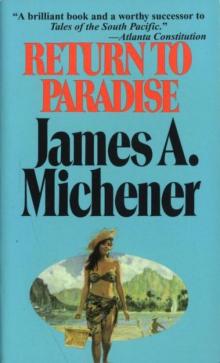 Return to Paradise
Return to Paradise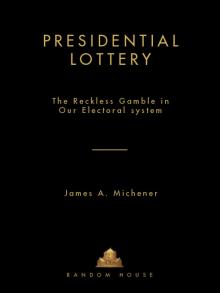 Presidential Lottery: The Reckless Gamble in Our Electoral System
Presidential Lottery: The Reckless Gamble in Our Electoral System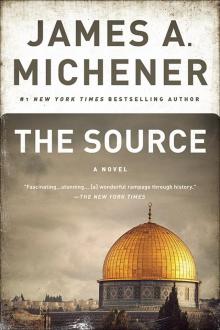 The Source
The Source Poland
Poland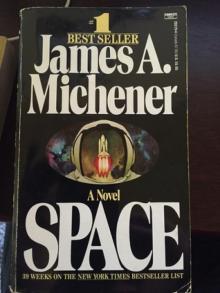 Space
Space Caravans
Caravans Creatures of the Kingdom: Stories of Animals and Nature
Creatures of the Kingdom: Stories of Animals and Nature Iberia
Iberia Hawaii
Hawaii The Watermen: Selections From Chesapeake
The Watermen: Selections From Chesapeake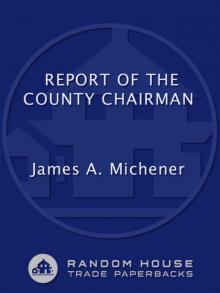 Report of the County Chairman
Report of the County Chairman The Covenant
The Covenant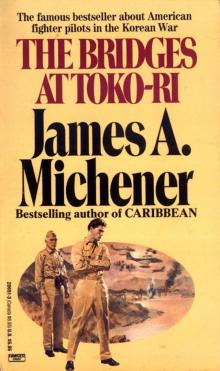 The Bridges at Toko-ri
The Bridges at Toko-ri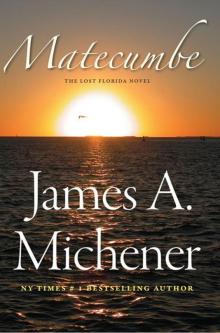 Matecumbe
Matecumbe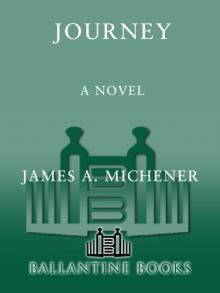 Journey: A Novel
Journey: A Novel Centennial
Centennial Sports in America
Sports in America Texas
Texas Miracle in Seville
Miracle in Seville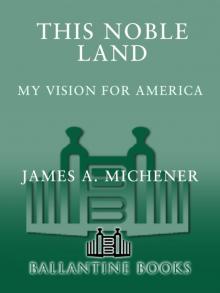 This Noble Land: My Vision for America
This Noble Land: My Vision for America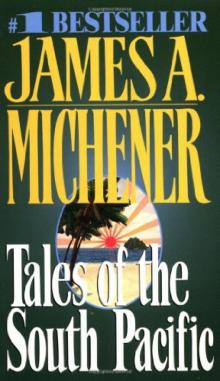 Tales of the South Pacific
Tales of the South Pacific Bridges at Toko-Ri
Bridges at Toko-Ri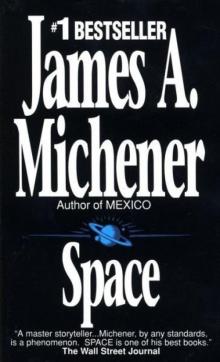 Space: A Novel
Space: A Novel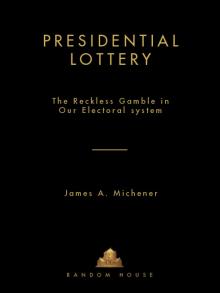 Presidential Lottery
Presidential Lottery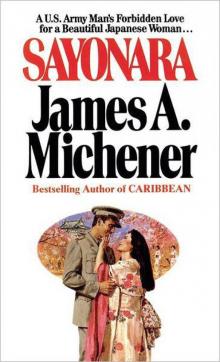 Sayonara: A Novel
Sayonara: A Novel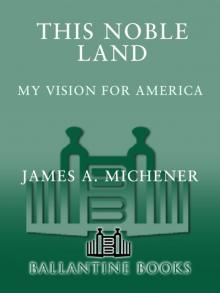 This Noble Land
This Noble Land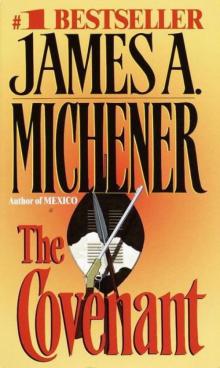 The Covenant: A Novel
The Covenant: A Novel Miracle in Seville: A Novel
Miracle in Seville: A Novel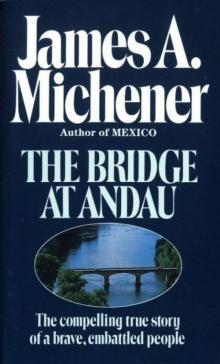 The Bridge at Andau
The Bridge at Andau Source
Source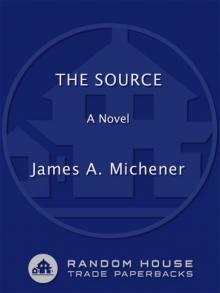 The Source: A Novel
The Source: A Novel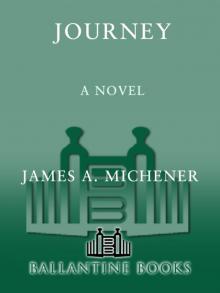 Journey
Journey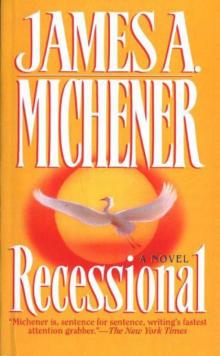 Recessional: A Novel
Recessional: A Novel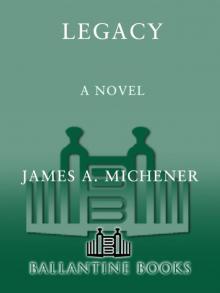 Legacy: A Novel
Legacy: A Novel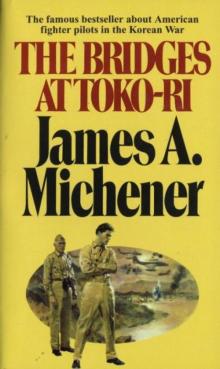 The Bridges at Toko-Ri: A Novel
The Bridges at Toko-Ri: A Novel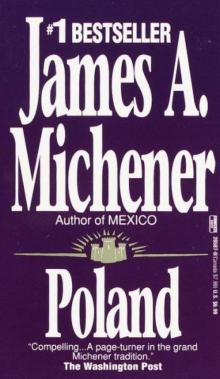 Poland: A Novel
Poland: A Novel